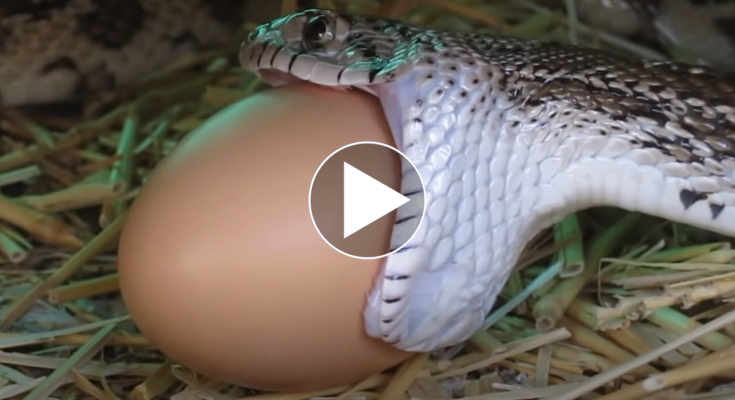1. A bullsnake consuming chicken eggs is a fascinating example of the predator-prey relationship in nature. These non-venomous constrictors are known for their impressive ability to adapt to various environments, and their diet often includes small mammals, birds, and their eggs. When a bullsnake encounters a nest of chicken eggs, it employs its keen sense of smell and sight to locate the vulnerable food source. The snake’s elongated body allows it to maneuver into tight spaces, making it adept at accessing nests that may be hidden in grass or underbrush.
2. Upon finding a nest, the bullsnake uses its powerful jaws to grasp the eggs, often swallowing them whole due to their relatively small size. The snake’s digestive system is well-equipped to handle such meals, allowing it to extract the necessary nutrients efficiently. This feeding behavior not only showcases the bullsnake’s role as a predator but also highlights the challenges faced by ground-nesting birds, such as chickens, in protecting their eggs from such opportunistic feeders. The bullsnake’s ability to consume eggs is a testament to its adaptability and survival skills in the wild.
3. The interaction between bullsnakes and chicken eggs serves as a reminder of the intricate balance within ecosystems. While bullsnakes play a crucial role in controlling rodent populations, their predation on bird eggs can have significant implications for local wildlife. Farmers and poultry keepers often need to implement measures to protect their flocks from these snakes, which may include habitat management or physical barriers. Understanding the behavior and dietary habits of bullsnakes can help in developing effective strategies to coexist with these fascinating reptiles while safeguarding agricultural interests.


Animals Reunited With Owners After Years !.
Angry dogs vs mirror reaction.
I Survived The 5 Deadliest Places On Earth.

